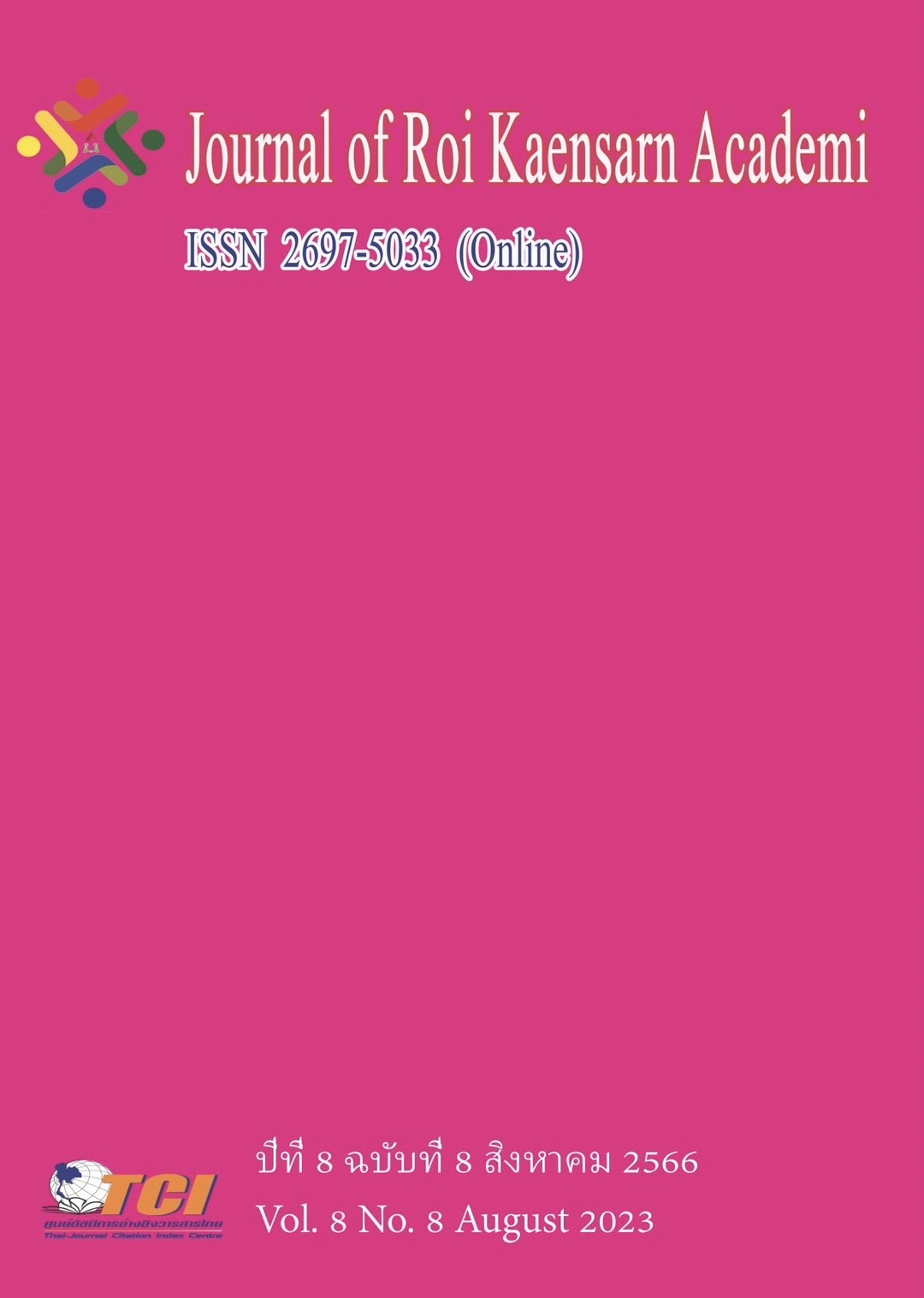Investigation and study on Muhong music of Yi nationality funeral ceremony
Main Article Content
บทคัดย่อ
Muhong is a well-known musical instrument in the Yi nationality area, which plays an important role in the Yi nationality wedding, funeral and sacrificial ceremonies, and is an indispensable musical form in the Yi nationality ceremony. This paper aims to investigate the Muhong musical instrument and its importance in the Yi nationality area. A case analysis approach was adopted to collect and analyse the data. The results shown that the music speed of Muhong is mainly allegro, supplemented by andante, and the music is solemn and dignified. The special music structure of clasp and tail is mainly composed of narrow rhymes Sol La Do and La Do Re, and wide rhymes Sol Do Re are supplemented with auxiliary notes or through the addition of notes, resulting in the characteristics of pentatonic scale or six sound segments. Muhong music has a rich culture and a long history. It is the artistic crystallization of the Yi people in their long life.
Article Details
เอกสารอ้างอิง
Gan Shaocheng, Wu Yiyue (2019). Retrospection and reflection on the study of Musical Instruments of the ethnic minorities in Southwest China. Huang Zhong (Journal of Wuhan Conservatory of Music), (02), 158-168.
He, H. (2013). Review of Chinese funeral ritual music research. Big Tone, 8 (02), 255-299.
Jalina (2014). Study on music and educational function of Funeral ceremony of Yi nationality in Sanguanzhai. PhD thesis, Southwest University, Chongqing. Jalina and Pu (2015). A preliminary study on the music inheritance mode of Sanguanzhai Yi People's funeral ceremony. China Conservatory of Music, (02), 100-106+142.
Lei, Yuyao (2018). The treasure of minority wind instruments -- An investigation and study of Mohong, a folk instrument of Yi nationality. China National Expo, (06), 4-6.
Liang, Y. M. (1990). Suona music in Yunnan Yi folk. National Art Research, (6), 27-30.
Liu, Yong (2005). Study on Chinese suona art. Shanghai: Shanghai Conservatory of Music Press.
Pu, H. K. (1987). Do Mi Sol A new theory of triphonic series. Yellow Bell, (3) : 39-46.
Pu, H. K. (1987). On the basic structure of folk songs - nuclear cavity. Journal of Central Conservatory of Music, (02), 42-46.
Pu, H, Q (2000). Discussion on the issue of "nuclear cavity" - Answer to Mr. Shi Wangwei. Journal of Central Conservatory of Music, (02), 28-35.
Su Wenting (2003). Theoretical exploration of nuclear cavity. Master's Thesis, Nanjing University of the Arts, Nanjing.
Zhang Xiaoyan (2011). Study on suona music of Yi nationality in Shonan. Music Writing, (5), 124-126.
Zhou Zhengjun, Hu Jiaxun (2009). Mo Hong ≠ suona. Journal of Guizhou University (Art Edition), 23 (02), 13-15+23.

